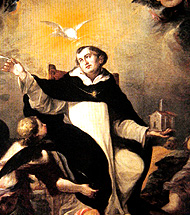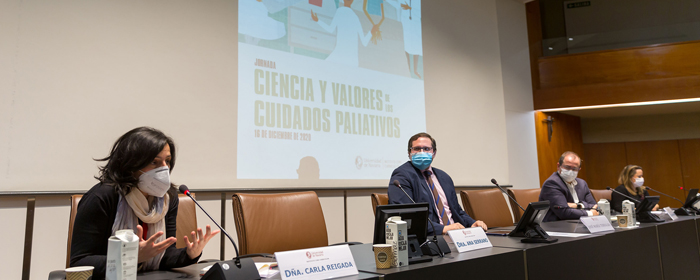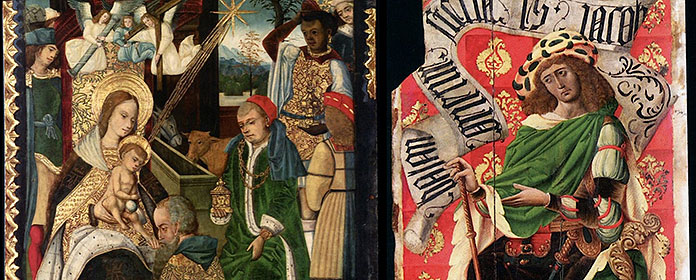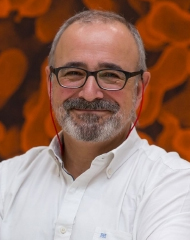The European cultural sphere in the time of St. Thomas

At the beginning of the 13th century, Western Europe or the Christianitas had overcome the long lethargy of the legacy of the disappearance of the Roman Empire. The growth of the population, the widening of economic horizons and a new social panorama were leaving behind the classic feudal model , offering new possibilities on all levels of reality, especially in the cultural sphere. The Gregorian ecclesiastical reform, the urban renaissance and the monastic splendor, meant, from the end of the 11th century, a call for greater and better cultural goods. B Thus, at the same time that artistic and intellectual manifestations grew, there was an increase in the means for cultural reflection and creation: employment of Latin as a grammatical vehicle for diplomatic relations and intellectual disputes, the birth of cathedral schools and universities, as well as an improvement in the methods of study and teaching.
Thomas Aquinas, Dominican and scholastic, combines in his person one of the most paradigmatic profiles as a cultural reference of his time. Apart from his theological and philosophical training , and the transcendence of his work during his lifetime, the biography of the angelic doctor enlightens us about the outstanding role of the universities and the Order of Preachers, to which he belonged, during the central centuries of the Middle Ages.
A student and master of Theology at the University of Paris, the nerve center of the main theological and philosophical speculations of the continent, he did not hesitate to leave it to serve his order in Italy, teaching in Naples, Rome, Viterbo and Orvieto (1259-1269). At that time, universities such as Bologna, with relevant programs of study in Law; Salerno and Montpellier, with great development of Medicine; Oxford and Cambridge; and Palencia, Valladolid and Salamanca, in the Iberian Peninsula, also stood out. Likewise, these centers of higher teaching were gradually becoming academic corporations with a high Degree of jurisdictional autonomy, dependent on the pontifical authority, and hubs of the vigor and versatility of the most outstanding intellectuals; in addition to being the focal points for the training of the main men and courtiers at the service of the Church and European monarchies.
goal Although the main university scholars focused on the study of Aristotelian works with the aim of defining a philosophical language at the service of theology, there was also a great deal of space for practical knowledge, such as political, humanistic, economic and medical reflection. And behind all this effort, the mendicant orders: Franciscans (1209) and Dominicans (1216); consecrated models of life born in this context of European changes to respond to the society of the time. The example of the "close" evangelical life of these friars, and their consecration to the preaching and evangelization of the people, ended up consecrating the Franciscans (more among the common people) and the Dominicans (more within the university institutions) as agents of the rehabilitation of culture, especially religious, in all spheres of society.





